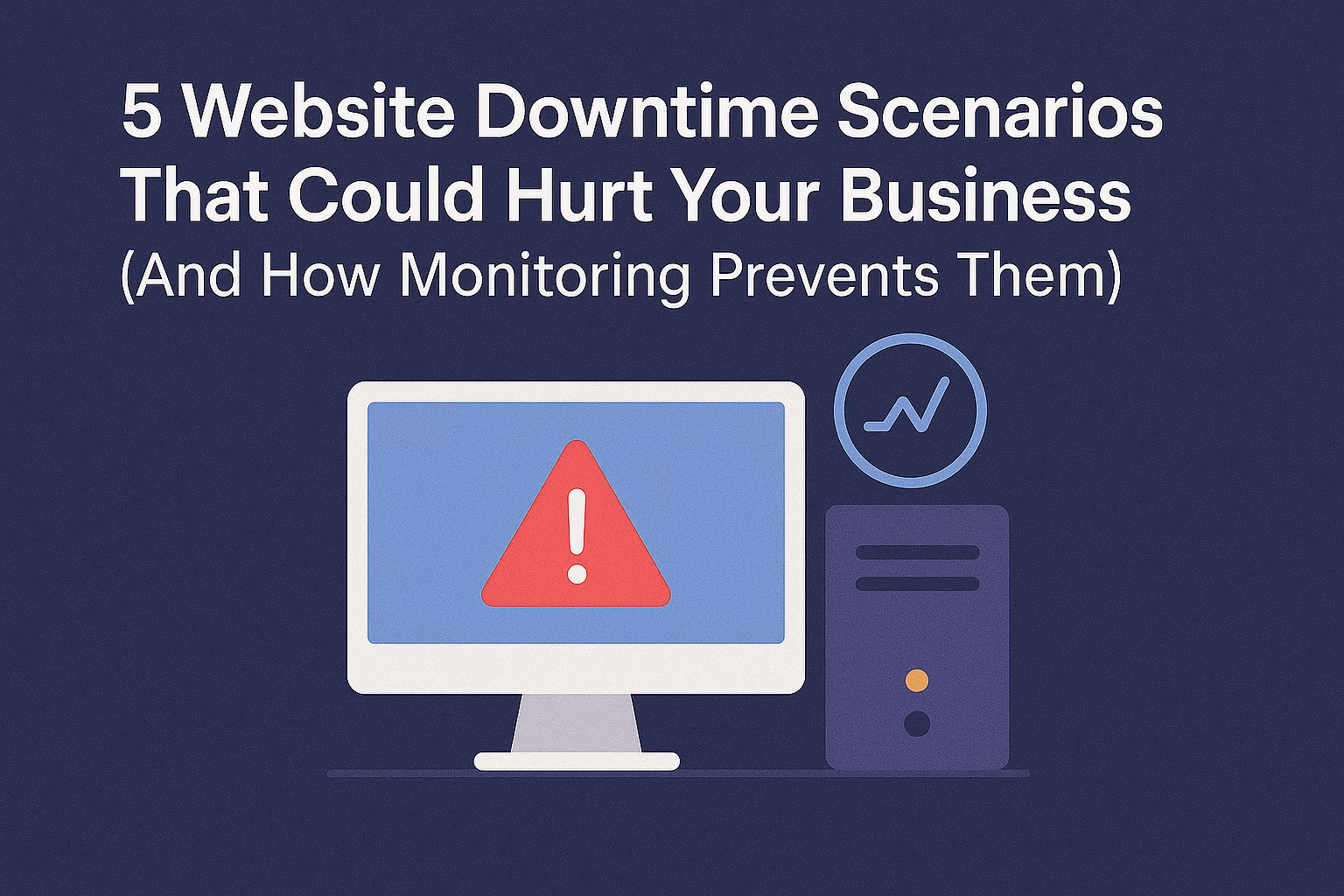Downtime isn’t just a technical issue — it’s a business problem.
When your website goes down, you lose more than just traffic. You lose trust, sales, SEO rankings, and sometimes even long-term customers.
And the worst part? You often don’t find out until someone tells you — or after the damage is already done.
That’s why real-time site and server monitoring with a tool like 360Monitoring, available via PLiKhost, is crucial.
Let’s look at 5 common downtime scenarios and how monitoring can save you from disaster.
🚫 1. DNS Failure or Misconfiguration
What happens:
Your website’s domain suddenly stops resolving because of DNS issues — maybe a bad nameserver update or TTL misconfiguration.
Impact:
Visitors see “This site can’t be reached.” Your email may also stop working.
How monitoring helps:
360Monitoring checks DNS resolution from multiple locations. If DNS fails, you get alerted instantly — before your users do.
🔒 2. SSL Certificate Expired
What happens:
Your SSL certificate expires and browsers start showing “Not Secure” or scary warnings.
Impact:
Customers abandon checkout pages. Trust drops. SEO may suffer.
How monitoring helps:
360Monitoring tracks SSL validity and expiration. You’ll get a reminder before it becomes a problem — giving you time to renew.
🕒 3. Server Overload or High CPU Usage
What happens:
Your server gets overloaded — too many processes, high memory usage, or an attack — and stops responding.
Impact:
Slow or completely unavailable website. Frustrated users. Lost sales.
How monitoring helps:
360Monitoring tracks system metrics (CPU, RAM, disk usage). You get alerted when resource thresholds are exceeded, so you can take action early.
🧱 4. Application Crash (e.g. PHP/Database Down)
What happens:
The server is online, but your app is not — maybe MySQL crashed, or your CMS threw a fatal error.
Impact:
Visitors see error pages like “500 Internal Server Error” — and may never come back.
How monitoring helps:
Advanced monitoring can detect response code issues (e.g. HTTP 500) and alert you immediately — not just server ping.
📉 5. Hosting Expired or Domain Suspended
What happens:
Oops — your hosting invoice wasn’t paid, or your domain got suspended for WHOIS inaccuracy.
Impact:
Your website vanishes from the internet. You find out too late.
How monitoring helps:
360Monitoring keeps checking your site’s availability. If it suddenly disappears (even if you forget), you’ll know immediately.
✅ Stay One Step Ahead with 360Monitoring
At PLiKhost, we offer 360Monitoring to help you:
-
Monitor uptime from multiple global locations
-
Track server health and load
-
Get alerts via email or SMS
-
View detailed incident history and performance metrics
-
Avoid costly, reputation-damaging surprises
Your site is your business. Don’t wait for your users to tell you it’s down.
🟢 Ready to Monitor Like a Pro?
Add 360Monitoring directly from your PLiKhost client area, and get peace of mind 24/7.
🔧 Simple setup
📊 Powerful insights
🔔 Instant alerts
💼 Start monitoring your website today with PLiKhost — because downtime is never good for business.






